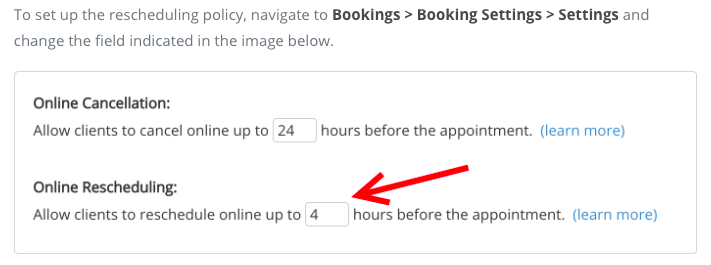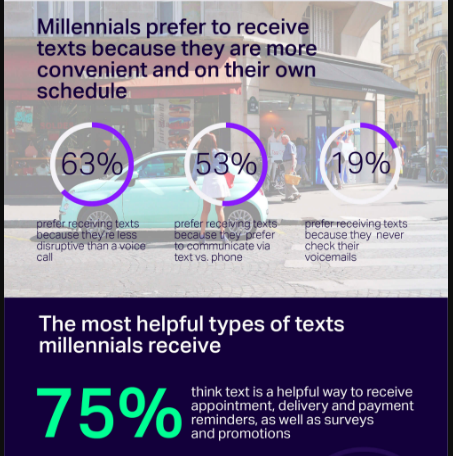Avoiding the Dreaded Scheduling Snafu
If you walk into any medical or appointment-based business and ask what its biggest challenge is, the answer will likely be universal: Dealing with scheduling.
It may seem like a simple process—you just pencil it in on the calendar! In a perfect world, this would suffice, but in reality there are too many unpredictable factors and room for human error for this to be the case. Not to mention cancellations and rescheduling. (Tip: You better have a big eraser.)
Scheduling issues can make or break your practice. Stacking the days with appointments is obviously how you manage to run a profitable business, but if you overbook or make mistakes in scheduling it can cause the patient to abandon your services for a competitor, thus affecting your bottom line.
By recognizing the importance of having a buttoned-up scheduling method, you can help make sure your patients are happy and your practice is running like the well-oiled machine it is.
Now you might be thinking: “It’s not that hard; what could possibly go wrong?”
In a word: everything. Let’s break it down a bit…
Timing
Before you even get into the logistics of scheduling or considering a third-party solution, it’s important to be able to accurately estimate how long appointments will last.
If your practice is one where appointments are for a slotted amount of time (for example, a 60-minute treatment), then this part is a lot easier. However, don’t forget to take into account the time necessary between appointments for cleanup, preparation, or potential (ahem) personal breaks for your practitioners.
If your practice is more medical-based and on a patient-by-patient case, then we know that predicting the time needed isn’t always an exact science.
Just remember to be realistic, learn from experience, and always try to plan for the unplanned. After all, rarely does a full day go by smoothly without a few bumps here or there!
Ease of Scheduling
If you don’t yet take advantage of online scheduling (come on, it’s 2018!), then you know that depending on in-person and phone scheduling has some limitations.
First of all, a patient has to be cognizant of office hours so they are able to actually get on the line with a member of your staff to discuss dates and times. Even if you have a voicemail service, there still needs to be some sort of two-way communication going on, and it only wastes time to have to jump into a not-so-fun game of phone tag with the patient to nail something down that works for both parties.
This also requires additional confirmations, rescheduling, or cancellation calls for both your patients and your staff, and that can take an absurd amount of office time—and we all know that time equals money.
By using a digital, automated scheduling service, you give your patients the ability to schedule their appointments on their own time, and ensure that they only see time slots that are currently available. This greatly reduces your chance of double-booking and makes for a simple, quick process.
That’s why having a partner like IntakeQ is such a smart investment for your practice.
With IntakeQ, your patients can actually now reschedule appointments online—not just first schedule or cancel. You can even dictate how far in advance the patient can make changes to their appointment, so you are in control of how flexible your practice wants to be.

Reminders
It would be great if you could schedule an appointment, wash your hands of it, and sleep tight at night knowing that each patient will show up on the right day, at the right time.
However, we all know that this just isn’t the case. We all lead busy lives—work, family, and social obligations bog down our calendars and are constantly making us stressed and overextended. Because of this, it’s easy to forget an appointment, especially if it was made weeks or months ahead of time.
To help your patients stay on top of their appointments (and therefore help reduce your chance of a no-show), it’s critical to employ a dedicated reminder plan.
But yet again, you’d have to have an employee almost entirely dedicated to making multiple reminder calls or shooting off emails to patients throughout the day in order to have an impact.
With IntakeQ, your patients can opt-in for reminders right on their digital intake form. From there, your practice can create customized reminder messages, set them, and forget them! Reminders can be set for voice, email, text, or a combination of all three.
And keep in mind that while you want to provide ample reminders, you don’t want to bombard or annoy the patient. Find a flow that works best for your practice—maybe a reminder one month out (if applicable), one week out, and the day before will suffice.
To Text or Not to Text?
While on the topic of texting, you may think that this form of message is a little too casual depending on the nature of your medical specialty or services. But we’re here to tell you to have no fear—texting has quickly become a preferred method of communication for consumers and patients alike.
According to Pew Research Center, 95% of Americans now use a cellphone of some kind, with 77% owning a smartphone—that’s up 35% in just seven years.
We are nearly always glued to our phones, so having the option to text reminders is a great way to ensure your messages are being seen and replied to quickly—especially when it comes to your patients who are in their 20s and 30s.
In this infographic from OpenMarket, we can see that 75% of millennials “think text is a helpful way to receive appointment, delivery, and payment reminders, as well as surveys and promotions.”

Source: OpenMarket
The proof is in the pudding, guys. Texting is simply the easiest way to communicate with patients about an upcoming appointment, so don’t be scared to use an automated service to help do that for you. Just remember when you customize these reminders to keep things HIPAA-compliant—no need to add sensitive specifics!
The Cost of Mistakes
Now don’t get us wrong, we’re not placing all of the responsibility on your shoulders. Your practice could implement a foolproof scheduling process and there would still be mishaps from time to time. That’s because it’s also up to the patient to be organized and on top of his or her own schedule.
A Healthcare Finance article from 2016 cited a study that found missed and open healthcare appointments cost the industry a whopping $150 billion every year.
According to the article, “Providers have no-show rates between five and 30 percent nationwide. Each 60-minute open or no-show slot typically costs physicians $200.”
Ouch—that hurts. So it’s critical that you take the steps necessary to reduce the chances of this as much as possible.
Create a seamless and positive scheduling experience for patients by following these tips.
The Bottom Line
No-shows happen, but following the advice above, enlisting the help of a holistic digital scheduling platform, and keeping open team communication to tackle any hiccups along the way will help your practice remain a dependable, flexible resource for your patients.






